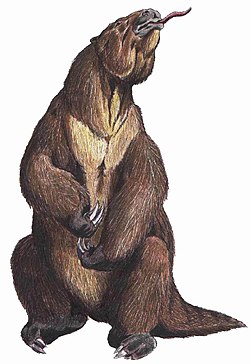| Nohochichak | |
|---|---|
| Scientific classification | |
| Kingdom: | Animalia |
| Phylum: | Chordata |
| Class: | Mammalia |
| Order: | Pilosa |
| Family: | † Megalonychidae |
| Genus: | † Nohochichak McDonald et al. 2017 |
| Species: | †N. xibalbahkah |
| Binomial name | |
| †Nohochichak xibalbahkah McDonald et al. 2017 | |
Nohochichak is an extinct genus of megalonychid ground sloth from the Late Pleistocene (Rancholabrean) of the Yucatan Peninsula in Mexico.

